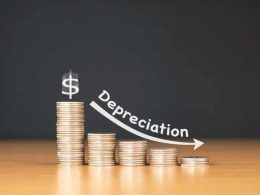In the ever-changing landscape of American politics, there is one recurring act that never fails to captivate the audience and draw criticism from all sides: the debt ceiling theatre of the absurd. The debt ceiling, a statutory limit on the amount of money the United States government can borrow, has become a perennial source of political drama, posturing, and finger-pointing. However, it is high time we recognize the detrimental impact this theatrical production has on the nation and its citizens.
First and foremost, the debt ceiling theatre undermines the stability and credibility of the American economy. Every time the debt ceiling looms, it creates uncertainty and sends shockwaves through financial markets. Investors, both domestic and international, become apprehensive about the United States’ ability to honor its financial obligations. This uncertainty can lead to increased borrowing costs, a potential downgrade of the country’s credit rating, and ultimately, harm the overall economic growth of the nation.
Moreover, the debt ceiling theatre is a quintessential example of political grandstanding. Instead of engaging in substantive policy debates and finding long-term solutions to address the country’s fiscal challenges, politicians use the debt ceiling as a political football. They engage in rhetorical battles, casting blame on their opponents, and scoring political points with their base. This self-serving behavior not only erodes public trust in the political system but also distracts from pressing issues that demand attention and action.
Another damaging consequence of this theatrical production is the negative impact on governance and public services. When the government nears the debt ceiling, it faces the risk of a shutdown, which disrupts vital services and programs upon which millions of Americans rely. Federal employees are furloughed, national parks are closed, and agencies struggle to fulfill their obligations. This self-inflicted crisis exposes the flaws in our political system and highlights the inability of elected officials to put the nation’s interests above their own political gamesmanship.
It is important to note that the debt ceiling is not a tool for fiscal responsibility. It does not directly control spending or address the underlying causes of the national debt. Instead, it creates an artificial constraint that ultimately needs to be raised to avoid catastrophic consequences. The debt ceiling debate should be an opportunity for policymakers to engage in a substantive discussion about fiscal responsibility, long-term budget planning, and making tough choices about spending and revenue. However, the current approach turns this important conversation into a political spectacle that serves no real purpose.
To break free from this cycle of absurdity, it is crucial to reform the debt ceiling process. One option is to eliminate or modify the debt ceiling altogether, replacing it with a more responsible mechanism that focuses on addressing the root causes of the national debt. Alternatively, Congress could implement automatic adjustments to the debt ceiling tied to specific economic indicators, ensuring that it adjusts in a measured and predictable manner, removing it from the realm of political brinkmanship.
In conclusion, the debt ceiling theatre of the absurd is a detrimental spectacle that undermines the stability of the American economy, erodes public trust, and distracts from pressing issues. It is time for politicians to set aside their partisan theatrics and engage in serious, responsible discussions about fiscal matters. The future of our nation depends on it.












